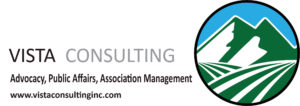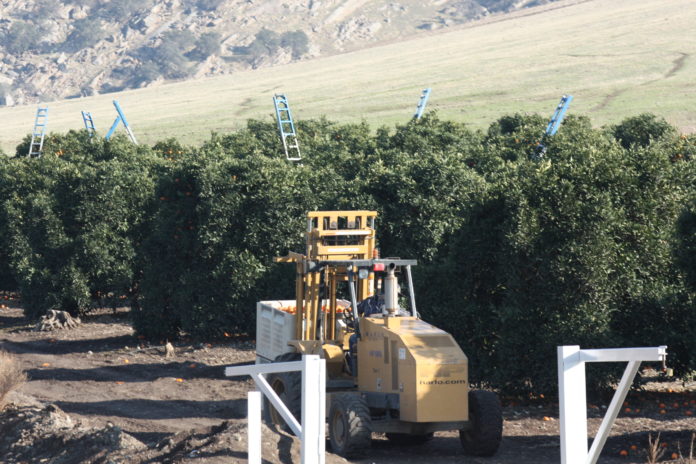 The Friant Water Authority held its Executive Committee meeting on Monday, October 12, 2020 by Webex. Before we get started I want to pass on a notice I received this morning from Diana Giraldo of Westlands Water District. She wrote to tell me Westlands has scheduled a call with District landowners for Tuesday, October 13, 2020 at 7:30 a.m. to discuss the Westlands Water District 2020 General Election, scheduled for November 3, 2020. In California water districts can have proxy votes and that has caused some confusion. You can find out more at https://wwd.ca.gov/
The Friant Water Authority held its Executive Committee meeting on Monday, October 12, 2020 by Webex. Before we get started I want to pass on a notice I received this morning from Diana Giraldo of Westlands Water District. She wrote to tell me Westlands has scheduled a call with District landowners for Tuesday, October 13, 2020 at 7:30 a.m. to discuss the Westlands Water District 2020 General Election, scheduled for November 3, 2020. In California water districts can have proxy votes and that has caused some confusion. You can find out more at https://wwd.ca.gov/
The Executive Committee meeting began in closed session at 8:30am to deal with  litigation. One ongoing case of the Natural Resource Defense Council suing the US Bureau for Reclamation, one of the California Natural Resources Agency suing the USBR and one case where the Tehama-Colusa Canal Authority is suing the California Department of Water Resources. The committee also had a case of anticipated exposure to litigation and a case of potentially initiating two cases of litigation on the agenda. There was also a real estate deal involving right of way for the Friant Kern Canal.
litigation. One ongoing case of the Natural Resource Defense Council suing the US Bureau for Reclamation, one of the California Natural Resources Agency suing the USBR and one case where the Tehama-Colusa Canal Authority is suing the California Department of Water Resources. The committee also had a case of anticipated exposure to litigation and a case of potentially initiating two cases of litigation on the agenda. There was also a real estate deal involving right of way for the Friant Kern Canal.
The open session was called to order by FWA Chair the amazing Chris Tantau, at about 9:41am. A prayer for wisdom was offered to God by Director Cliff Loeffler. There was not a public comment but the minutes were approved. CEO Jason Phillips next spoke about setting the calendar for the next year. He asked the committee to please indulge him for a July meeting change as he and his wife will be going on vacation. Also, the February meeting will fall on a holiday and that will be moved. Today is Columbus Day also called Indigenous Day by some which makes sense since we’re all indigenous. This was pointed out by Director Edwin Camp and Director Rick Borges thanked him for working on a holiday. Farmer humor, good stuff.
Paying the Pumper
Now the meat of the meeting. Last week Phillips attended the San Luis Delta Mendota Water Authority’s board meeting. The topic is rewinding the pumps at the federal Jones Pumping Plant. Each pump rewind costs in the millions of dollars. SLDM is looking at issuing bonds to finance the rewinding. FWA is obligated to pay for its share. However, Friant wants to pay cash and avoid a good deal of debt. The SLDM board was concerned the bond raters wouldn’t be comfortable with this and wanted Friant to pay about $5 million upfront. Friant thinks it would be best to pay $1.77 million upfront with additional payments to follow. SLDM is meeting today to discuss this. Phillips said after Friant’s position was giving other SLDM members wanted to pay cash also. SLDM staff is  investigating how this could work. There was some questions amongst the other members about a penalty in interest to those who pay through the bond process verses those who pay cash for the pump rewinding. Phillips said SLDM Executive Officer Federico Barajas’ willingness to work with FWA and staffs’ efforts to help move things along. He expects things to work out well.
investigating how this could work. There was some questions amongst the other members about a penalty in interest to those who pay through the bond process verses those who pay cash for the pump rewinding. Phillips said SLDM Executive Officer Federico Barajas’ willingness to work with FWA and staffs’ efforts to help move things along. He expects things to work out well.
Fixing the FKC
Janet Atkinson and Bill Swanson are engineers with Stantec Inc. Atkinson gave an update on the repair plan for the FKC. Atkinson said they’ve met with managers along the repair locations. Heather Waldrop is Stantec’s enviro consultant and will give a report on the Environmental Impact Report. Waldrop gave a slide presentation and said the environmental team has members from FWA, the USBR and Stantec. It looks like there are 12 team members. Friant is the lead agency for CEQA and I believe the Bureau is taking the lead on NEPA.
The Friant board will be asked at the next meeting to approve the CEQA portion. The goal is to restore the canal capacity that has been lost due to subsidence in the reach along the Tulare/Kern County line. The final EIR had three options, no action, restore the canal to design capacity or enlarge the canal. The actions were projected through 2070. The no action/do nothing causes further degradation of the canal’s ability to move water south, or north if the reverse pump-back project is completed.
The restore capacity option would raise the FKC for 13 miles and add another canal to the side. Part of the current canal would have 20 feet dug out on both sides and new lining set down. There are a plethora of turnouts, road crossings, check structures and other such infrastructure to deal with.
Under the National Environmental Policy Act NEPA the Bureau has to prepare an Environmental Impact Statement//Record of Decision. Under the California Environmental Quality Act an EIR must also be prepared. That’s what EIR, ROD, NEPA and CEQA stand for. Waldrop said the CEQA would be ready for this month’s board meeting.
Next Waldrop reported on the public and stakeholder outreach. She said that generated 14 comments from these efforts and most of them were positive and were included in the NEPA/CEQA documents. There have been many other outreaches include the Bureau sending state agencies letters requesting them to be cool about things. Air quality, biological, cultural, tribal, geology and soils, greenhouse gas and hazards and about five others I couldn’t type fast enough to relate were all analyzed in the final EIR.
Waldrop said there are some “significant and unavoidable” impacts. Culturally the FKC is a historic resource and it would be altered. Some permanent conversion of important farmland and delayed traffic were also considered unavoidable. The proposed project is considered the superior alternative plan. She said the next meeting the board will be asked to certify the EIR, approve the project, adopt mitigation and overriding considerations. This project has options that could take 10-years to complete because the construction has to yield to water deliveries. There are possibilities for a three year time frame.
Camp asked about landowners’ response. He was concerned participation could delay things. Attorney Don Davis said half of the offers have been sent to landowners. He said in general the response has been good but negotiations have yet to take place. The hope is all the property will be acquired with voluntary sales and agreements and eminent domain won’t be necessary. Efforts are being focused on the most immediate lands needed to start. Tantau thanked Waldrip for a 15-minute presentation on a year’s worth of work.
Funding the Repairs
Brian Thomas with PFM gave a report on how to pay for canal repairs. There are options for Friant contractors to pay extra for extra capacity. There is also a potential cost share agreement with the Bureau and a repayment agreement with the Bureau. Friant is also  working with the Eastern Tule GSA for reimbursement. This is a story unto itself. There is also a Water Infrastructure Finance & Innovation Act program that offers low interest loans. That’s WIFIA for you – but there are still legislative hurdles to jump. Thomas said there still needs to be agreements with the Zone Three commitments, the needed cost-share/repayment agreements with the Bureau and self-funding all have yet to be completed.
working with the Eastern Tule GSA for reimbursement. This is a story unto itself. There is also a Water Infrastructure Finance & Innovation Act program that offers low interest loans. That’s WIFIA for you – but there are still legislative hurdles to jump. Thomas said there still needs to be agreements with the Zone Three commitments, the needed cost-share/repayment agreements with the Bureau and self-funding all have yet to be completed.
Phillips took the discussion to Zone Three matters. It has been suggested there should be certain incentives to sign up early as the earlier incentives are helpful while the later ones, not so much. He reminded everyone there is a chance things could be fully funded but it would be wise to move ahead on partial funding. A schedule of events was presented that included completing negotiations with Eastern Tule GSA and a cost share agreement with the Bureau. Phillips said he’s stressing to the Bureau FWA wants to start with FKC Reaches D&E.
He asked the committee to give ideas for Zone Three incentives. Funds for Zone Three could be considered loans. If a district commits to Zone Three but if even more capacity becomes available that district would have first shot at the extra capacity. It sounded like there is still some question about repaying the loans and perhaps putting the Zone Three lenders in first place to be repaid would be a good incentive. Thomas said ETGSA funds come in during the first five years the Zone Three loans would be paid from that source but first right to capacity would decline. If it takes longer than that the lenders would retain 10  percent capacity. There is also the option being considered to flat out, sell Zone Three capacity for permanent retainment. You would be wise to consult Friant directly to verify what was conveyed in this report. The documents are available online from FWA. Camp is the President of Arvin Edison WSD. Arvin is at the end of the canal and he said he was not happy about the direction this is taking. You can expect a big discussion at the board meeting.
percent capacity. There is also the option being considered to flat out, sell Zone Three capacity for permanent retainment. You would be wise to consult Friant directly to verify what was conveyed in this report. The documents are available online from FWA. Camp is the President of Arvin Edison WSD. Arvin is at the end of the canal and he said he was not happy about the direction this is taking. You can expect a big discussion at the board meeting.
Fergus Morrisey, GM Orange Cove ID asked if the ETGSA 218 Election doesn’t pass where will the money for the first five years come from. I’m conveying this question correctly as Phillips said the negotiations with ETGSA are still confidential and pending.
Eric Quinley, GM Delano Earlimart ID stated his district is opposed to any permanent capacity to be sold. He said that would not be fair to all the districts who have paid into the construction of the Friant Division. Phillips said the question is when will an entity pay for the needed capacity for Zone Three. He said Zone Two capacity, which is a return to design capacity is the first pot of money being sought. Aaron Fukuda, GM Tulare ID ask what rate a WIFIA loan could be and Phillips said a zero percent rate could be available. Tantau said he was aware of the concerns. He was a bit more articulate than I conveyed. Quinley suggested a Zone Two A and a Zone Two B to protect historic access and deliveries. Camp commented if you want the canal repaired you’ll have to pay up. If you don’t want to pay up expect things to happen. Tom Weddle, GM Exeter & Ivanhoe ID said his districts are aligned with Quinley’s view. Director Kent Stephens, Kern Tulare WD said if the family wants a family plan then they’ll have to pay but if they  don’t there will have to be an alternative. Weddle said if the family caused the problem that would be one thing. Tantau cautioned that the problem is the focus and it needs to be solved. Phillips agreed but acknowledged there are others who share Weddle’s notion. He also said now that the Bureau doesn’t take a top down approach and force folks to pay there will be more discussions like this. This will be a retreat item. Tantau said it would be good to develop a plug and play solution as opposed to a protracted negotiation every time things come up.
don’t there will have to be an alternative. Weddle said if the family caused the problem that would be one thing. Tantau cautioned that the problem is the focus and it needs to be solved. Phillips agreed but acknowledged there are others who share Weddle’s notion. He also said now that the Bureau doesn’t take a top down approach and force folks to pay there will be more discussions like this. This will be a retreat item. Tantau said it would be good to develop a plug and play solution as opposed to a protracted negotiation every time things come up.
External Affairs
FWA’s Alex Biering and consultant Mike Villines gave their reports. Governor Gavin Newsom vetoed SB 559 by State Senator Melissa Hurtado that would have gotten the state involved in recognizing the FKC is vital and some investments should be made. Newsom’s veto message was included in the packet and it was a bit thin, let’s leave it at that for now. Biering also mention Newsom’s executive order to preserve 30 percent of California’s land and coastal area which sounds a lot like a bill by Assemblyman Ash Kalra. Villines said Kalra’s bill was killed so it was a bit of a surprise but the media is treating Newsom’s order as bluster to a great degree. The state legislature has adjourned until later so we’re mischief safe for a little while.
Johnny Amaral gave the federal update. He said there are on and off discussions about a China Virus stimulus he doesn’t think will go anywhere. The Supreme Court confirmation is taking all the air out of the room and that should last through the end of the month. Amaral said 10 out of 10 state legislators and five out of five federal legislators sent letters of support for FWA receiving a WIFIA loan.
CEO Report
Phillips said last week the transfer work contract extension for another 35-years has been completed with the Bureau. He said there is a copy on the FWA website. He said the retreat is a month out and it takes a lot of work to put together a program that will be helpful and not distracting. I would love to attend that retreat but I will be out of state. The public can attend but I’m not sure there are any slots left open. Loeffler asked if there will be a tree kill or electronic packet. Phillips said it’s hard to tell, it would be better to harvest some trees before they burn but at the moment the plan is digital. There’s about 35 or so folks already signed up.
That was that.
DISCLAIMER OF RESPONSIBILITY; Waterwrights strives to provide its clients with the  most complete, up-to-date, and accurate information available. Nevertheless, Waterwrights does not serve as a guarantor of the accuracy or completeness of the information provided, and specifically disclaims any and all responsibility for information that is not accurate, up-to-date, or complete. Waterwrights’ clients therefore rely on the accuracy, completeness and timeliness of information from Waterwrights entirely at their own risk. The opinions expressed in this report are those of the author and do not represent any advertisers or third parties.
most complete, up-to-date, and accurate information available. Nevertheless, Waterwrights does not serve as a guarantor of the accuracy or completeness of the information provided, and specifically disclaims any and all responsibility for information that is not accurate, up-to-date, or complete. Waterwrights’ clients therefore rely on the accuracy, completeness and timeliness of information from Waterwrights entirely at their own risk. The opinions expressed in this report are those of the author and do not represent any advertisers or third parties.
ALL RIGHTS RESERVED. Copyright 2020 by WaterWrights.net/DAW
FRIANT WATER AUTHORITY
854 N. Harvard Ave., Lindsay, CA 93247, Office 559/562-6305 Email: information@friantwater.org www.friantwater.org
The Friant Water Authority is a Joint Powers Agreement with 15 districts to operate and maintain the Friant Division of the Central Valley Water Project. Water from the San Joaquin River is diverted at Friant Dam at Millerton Lake to the Madera/Chowchilla Canal to the north and the Friant/Kern Canal to the south. More than one million acres of mostly family farms and numerous communities get their surface supplies form the Friant Division.
Staff: CEO Jason Phillips, COO Doug DeFlitch, CFO Don Willard, Government Affairs & Communication Alexandra Biering, Water Resource Manager Ian Buck-Macleod, Superintendent Chris Hickernell and Attorney Don Davis.





























